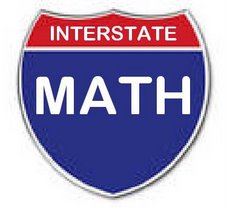************************
From FOCUS [The Newsletter of the Mathematical Association of American], February 2007, Volume 27, Number 2, p. 31. See http://www.maa.org/pubs/focus.html
----------------------------------------
This is the THIRD (and last) of three articles that appeared in the current issue of FOCUS dealing with NCTM's Curriculum Focal Points.
************************
What are the Curriculum Focal Points? And Why Should We Care?
By Barbara Reynolds
What are the Curriculum Focal Points for Prekindergarten through Grade 8 Mathematics: A Quest for Coherence (National Council of Teachers of Mathematics [NCTM] 2006)? Why should they matter to me? Why should they matter to the mathematics community?
In 2000 the NCTM released the Principles and Standards for School Mathematics, a comprehensive document that built on a bold vision that had been set by An Agenda for Action (NCTM 1980) and expanded in a set of Curriculum and Evaluation Standards for School Mathematics (NCTM 1989). The Principles and Standards sets a challenging comprehensive program, outlining goals that are both broad and deep. Now just six years later, the NCTM has presented us with Curriculum Focal Points. Does this new document represent a change in direction, a strengthening of the guidelines laid out in the Principles and Standards, or (as some might fear) a watering down of the content of the school mathematics curriculum?
When it first came out, I studied the Principles and Standards rather thoroughly, and was excited by its comprehensive vision. If students coming into college and university mathematics courses were educated according to the goals outlined in the Principles and Standards, if they came into college mathematics courses with the depth and breadth of understanding proposed in the Principles and Standards, wouldn't our job as teachers of undergraduate mathematics be so much easier!
My fear as I began to read the Curriculum Focal Points was that I would find a simplified list of competencies, grade-level mastery objectives, and testable outcomes - after all, this is the world of No Child Left Behind (NCLB) - that might represent minimal goals for each grade level of the school mathematics curriculum. My fear was that the Curriculum Focal Points would set minimal goals that would undermine the bold vision set by the Principles and Standards. Would the NCTM sell out to NCLB?
Instead what I see in the Curriculum Focal Points is a balanced set of guidelines that shows one way of developing a prekindergarten through grade 8 mathematics curriculum, guidelines that give focus to one or another area of the objectives set by the Principles and Standards at each grade level, while illustrating ways of making connections to the overall fabric of mathematics throughout the entire prekindergarten through grade 8 mathematics experience of school children. The Curriculum Focal Points are not presented as a curriculum in and of themselves, nor are they presented as a set of lesson plans. Rather they are presented as guidelines for developing an integrated Prekindergarten through Grade 8 mathematics curriculum. These Curriculum Focal Points illustrate one way of making explicit connections both to topics that the child studied in the preceding years, and to content that will be coming in subsequent years. Curriculum developers and textbook writers could use these Curriculum Focal Points as an organizing outline - focal points, actually - to develop mathematics programs that will be integrated and connected across grade levels. Classroom teachers would then be in a position to present mathematics at each grade level that implements the broad vision set by the Principles and Standards, and builds coherently from year to year. The Curriculum Focal Points make it more likely that classroom teachers will have well-designed materials that follow the bold vision set by the Principles and Standards, and that allow them to develop problem solving, reasoning, and critical thinking skills in their students without sacrificing computational skill development.
I began this reflection by asking why these Curriculum Focal Points should matter to me? Why should they matter to those of us who teach undergraduate mathematics? After all, students coming into our undergraduate mathematics classrooms are four or more years beyond Grade 8. What impact might these Curriculum Focal Points have on my own teaching of undergraduate mathematics?
The Curriculum Focal Points could impact my own teaching in two ways: First of all, if more schools adopt school mathematics materials that implement the vision of the Principles and Standards, classroom teachers will need to have a deep and broad understanding of mathematics. Classroom teachers will need an understanding of mathematics that goes well beyond computational fluency and that encompasses deeper mathematical reasoning and problem-solving skills. So we need to think about how to better prepare pre-service teachers, and we need to think about on-going professional development of in-service teachers. Secondly, if the calculus reform movement of the 1980s taught us anything, we must be aware that as school curriculum implements the bold vision expressed in the Principles and Standards - something that will be facilitated by the guidelines set out by the Curriculum Focal Points - we can expect that in four to six years we will be seeing more students whose school mathematics programs implemented this bold vision coming into our own undergraduate mathematics classes. Will we be ready for such students?
---------------------------------
Barbara Reynolds, SDS, is professor of Mathematics and Computer Science at Cardinal Stritch University in Milwaukee, WI. She has a passion for teaching for understanding.
----------------------------------
THIS IS THE THIRD AND LAST POSTING ABOUT THE Curriculum Focal Points.
Subscribe to:
Post Comments (Atom)


No comments:
Post a Comment